Want to know how to clean art glass? These tips will ensure you don’t damage your hand-blown glass and keep it looking pristine for years to come.
Please use this information as a guide and follow any artist or manufacturer’s instructions.
OK, let’s get on to the art glass cleaning advice…
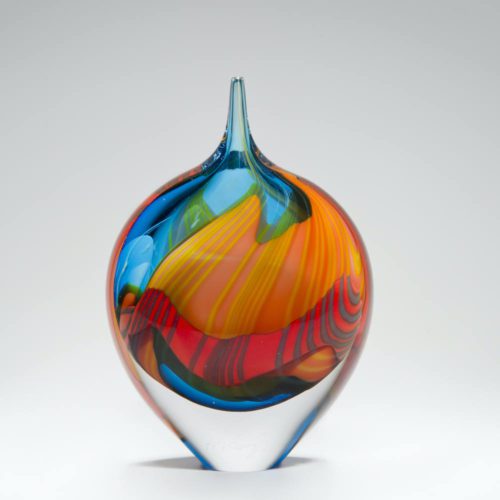
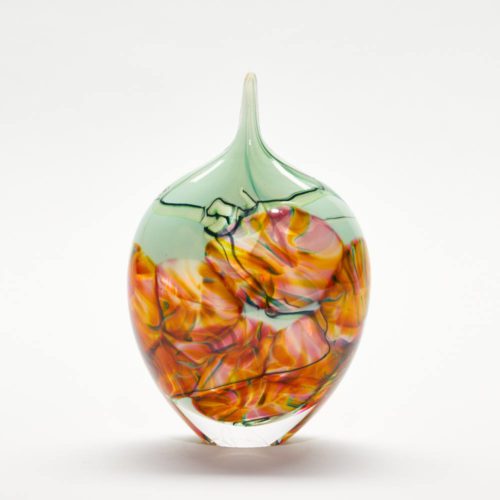
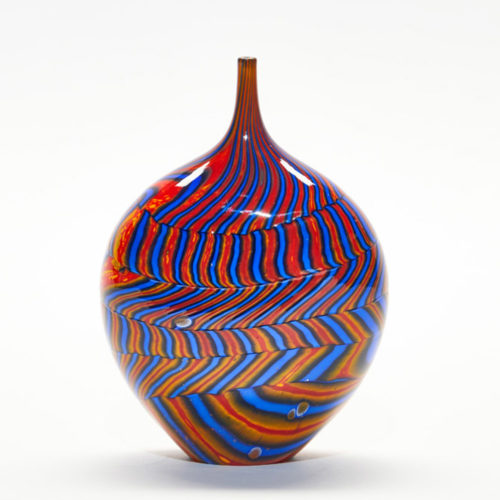
Preparing to Clean Art Glass
Before you start cleaning your art glass it is important to prepare. Here are some of the items you will need to clean your art glass
Soft, Lint-free cotton cloth or microfibre cloth – use a brand new one to ensure that no bits of grit are in there which can scratch the glass
Neutral Soap – Neutral soap has a PH of around 7. One of the most common neutral soaps is mild washing-up liquid (dish soap) that is gentle on the hands. Make sure it is one that
Feather duster – is a soft option to remove surface dust
Soft brush – Either a makeup brush or a soft natural never-used paintbrush can be used to get into the difficult-to-reach crevices.
Air compressor – can be used to clean pieces with intricate detailing that can’t be reached even with the finest of brushes.
Dry white rice can be used to clean the inside of a vessel instead of a brush or air compressor, by swirling it around.
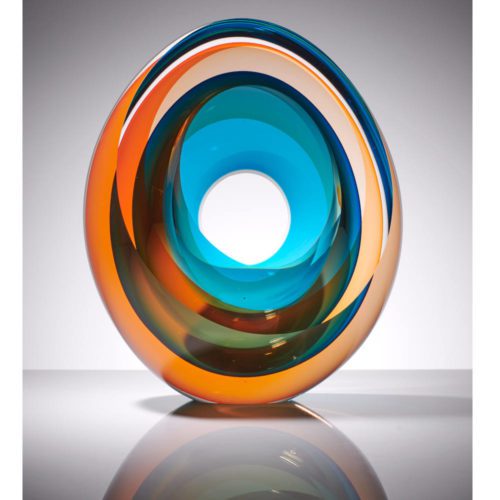
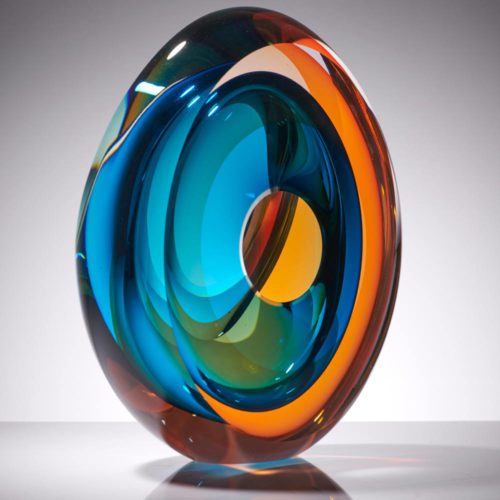
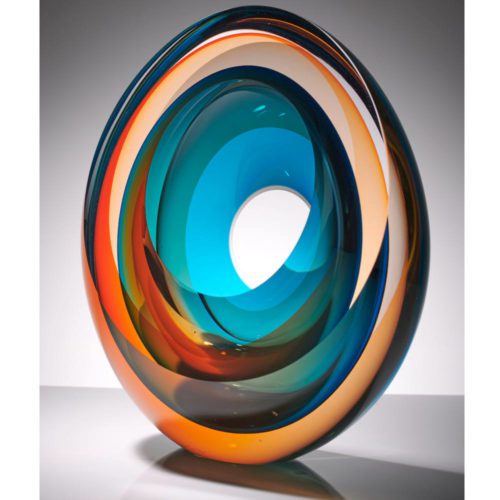
Starting to Clean your Art Glass
The first thing to do before you touch the glass is to take off your rings, bracelets and watch as these can scratch the glass. Diamond rings will easily scratch art glass and handling glass while wearing jewellery is one of the main causes of glass scratches.
Next, pick up the art glass by the base from where it is usually kept and place it on a big sturdy table on a spread-out soft cotton towel, or a yoga mat is also good.
Make sure the area is well-lit so that you can clearly discern which areas need the most cleaning. Bring over an additional lamp if required but make sure the cable is not a trip hazard.
Always use two hands when moving glass. Make sure your hands are clean and not slippery. Do not wear gloves.
If there is a chance that it may roll off the table then do not lie it on its side.
Loosen the dust with a dry cloth or brush.
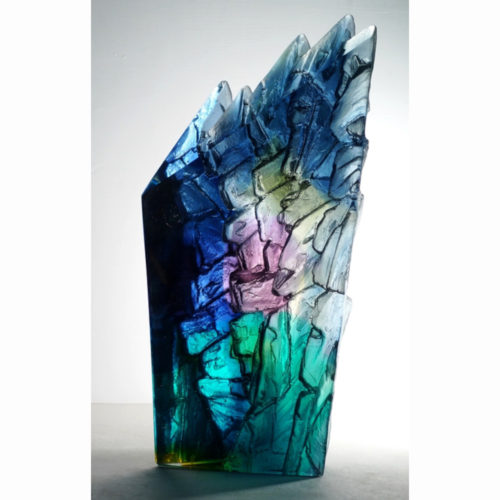
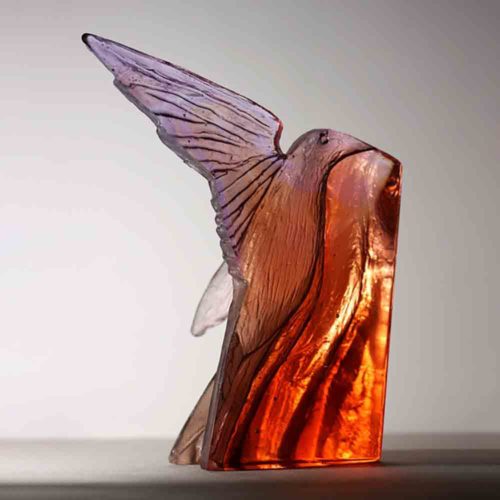
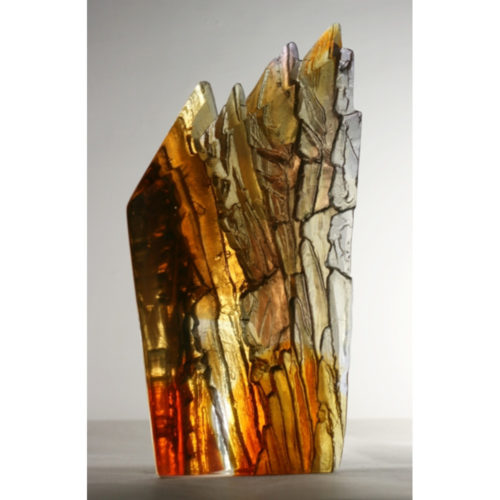
Using Water To Clean Art Glass
After a dry dusting, you can use a damp cloth to give it a clean.
If you are using water then be careful not to use hot water. Use warm water and do not run it under cold water after.
Never ever use a dishwasher to clean your art glass. The dishwasher cycle uses water at a very high temperature which can easily crack art glass. Also, items can move in the dishwasher and art glass can be damaged by being knocked by other items.
If you must use soap, use neutral soap to ensure that no residue is left on the glass. Never use abrasive pads like steel wool as these will certainly scratch the glass.
If you are going to immerse glass in water then use a clean plastic bowl and only put one item in at a time. Make sure the plastic bowl is not going to slip about while you are working. Put a damp dishcloth, towel or clean yoga mat under the bowl to keep it from moving. If you have to move a sink, then put a rolled-up dishcloth on the bottom of the sink and be extra careful handling slippery glass.
After washing, be sure to thoroughly dry your glass with a soft cloth as water contains minerals which can leave spots or a residue on the glass. Even better would be to clean your glass with distilled water as this won’t have the minerals in that can spot or mark your glass.
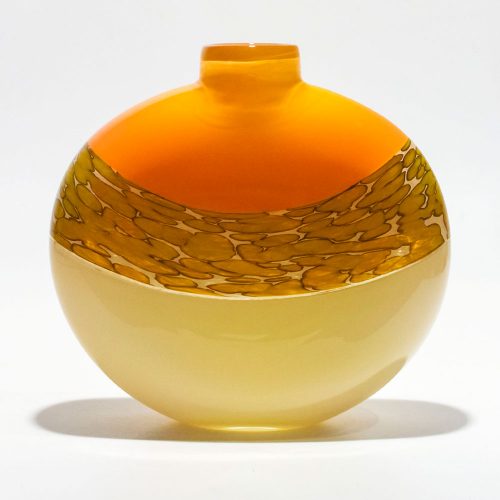
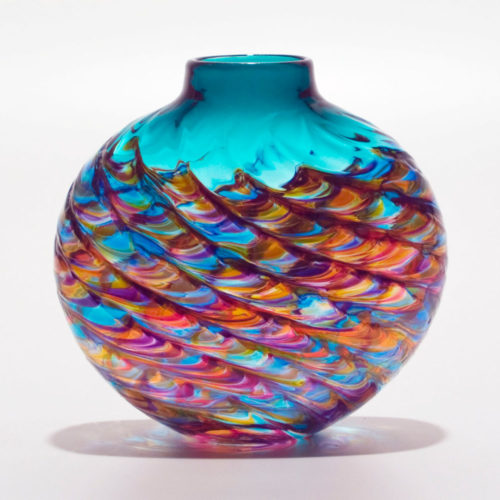
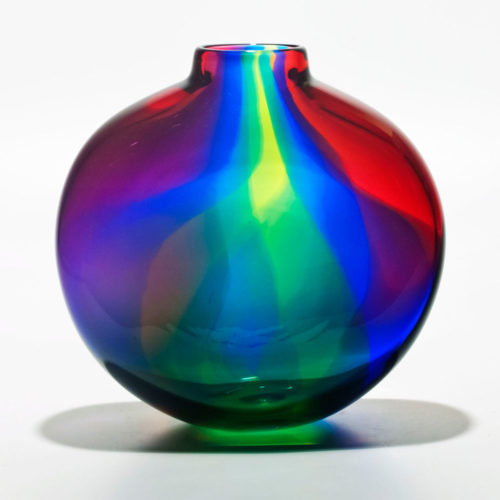
Using Glass Cleaner to Clean Glass
Some people use glass cleaner to clean their glass. It comes in a spray, liquid or foam. We do not recommend it as it can leave a residue on the glass and can negatively affect the glass that has been sandblasted/etched.
If you are trying to get rid of fingerprints, then a cloth dipped in neutral soap and wrung out is better and safer than glass cleaner.
Never use aerosol cleaning sprays on art glass, ever!
Never use harsh detergents or chemicals to clean your art glass. They can leave your glass cloudy or patchy.
Cream cleaners have been recommended to be used on sandblasted glass to remove scratches or marks but we do not recommend them. Scratches will need to be buffed out by a professional glass repairer.
If you really must use cleaning products then test them on a small, inconspicuous piece of the glass first to see if there is any negative effect.
